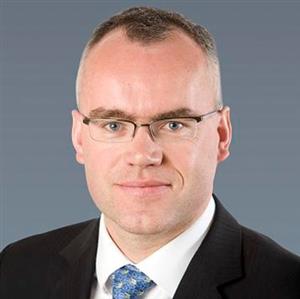We believe defensive positioning will remain important for investors going into 2023. Cash and uncorrelated assets will form a key component of multi asset portfolios until volatility subsides. Government bonds are also likely to have a role to play, especially now that yields are much more attractive. If 2023 brings a hard landing, as we believe it will, central banks should ease off hiking rates as growth slows. The structural tailwinds that drove the bond rally over the last 40 years may have diminished somewhat, but government bonds are still the go-to asset for portfolio diversification in a recession.
Deteriorating environment not yet reflected in equities
The time will come to allocate back into equities too. But for now, the deteriorating environment is not reflected in earnings forecasts or valuations, implying there could be further downside to come. We expect volatility to remain high, and sentiment is low enough that sharp risk-on bounces will be likely, if short-lived. Earnings estimates for 2022 have gradually declined as the year has progressed, but estimates for 2023 have barely budged, an anomaly given the challenging outlook for the coming year. Valuations have fallen somewhat; pockets of real value are emerging. However, many markets are a long way from what we might call ‘cheap’ compared to history.
Potential catalysts for sentiment to pick up
As we move into 2023, we are focused on finding pockets of growth in a low growth world. While the overall investment outlook is gloomy, there are several themes that could provide the catalyst for sentiment to improve.
First, signs that hard US data is moderating could be a harbinger of the much-feted Fed pivot. Although we do not expect it soon, when it does arrive, it should boost risky assets such as equities and credit, as well as government bonds.
Second, any relief for European consumers, either by an unexpected end to the war or a comprehensive fiscal support package would improve the region’s outlook.
Third, any indication that Chinese authorities are prepared to relax strict Covid rules or refocus on growth and away from reform would be taken very positively by markets.
Lastly, we will be watching guidance from the Bank of Japan closely for any indication they are ready to step away from yield curve control. This would stem the yen’s devaluation and could potentially push global government bond yields higher.
Deglobalisation
We expect the structural theme of deglobalisation and re-shoring to continue in 2023. China is going through a transition phase, and we believe the gradual bifurcation of China and the West will continue. While this may be a drag on China, the reconfiguring of supply chains will provide opportunities for other countries too, especially Mexico and Canada, but also some Latin American economies and Thailand and Vietnam.
Less correlated exposures will be an important part of the investment arsenal
Of course, the first rule of multi asset investment is to understand the difference between asset behaviour over the long and the short term. Over a longer time horizon, we see no reason for undue pessimism. Economies will survive this particular bout of challenges and doubtless emerge stronger when they do. As long-term investors, it is important not to lose sight of the big picture, but to be alert to opportunities along the way, with the aim of both capturing short-term upside and mitigating downside.
In 2023 and beyond, we believe multi asset investors must make use of as broad a toolkit as possible. From liquid absolute return strategies (aiming for positive, uncorrelated returns) to listed alternatives (including infrastructure and renewables) to private assets (including private equity, private credit and real estate), less-correlated exposures will be an important part of the investment arsenal. Indeed, the coming years and their challenges call for wider sources of diversification and risk, where investors will be forced to look beyond traditional assets to deliver outcomes over the long term.
Outlook materials
- Download the PDF of the 2023 Outlook to understand the latest thoughts of our investment teams as they position themselves for the polycrisis (and download the Asia Outlook here).
- Dig deeper into the data that's guiding their thinking: this deck provides context in charts.
- View the investment implications of the 2023 Outlook across different asset classes in this one-page matrix.







































